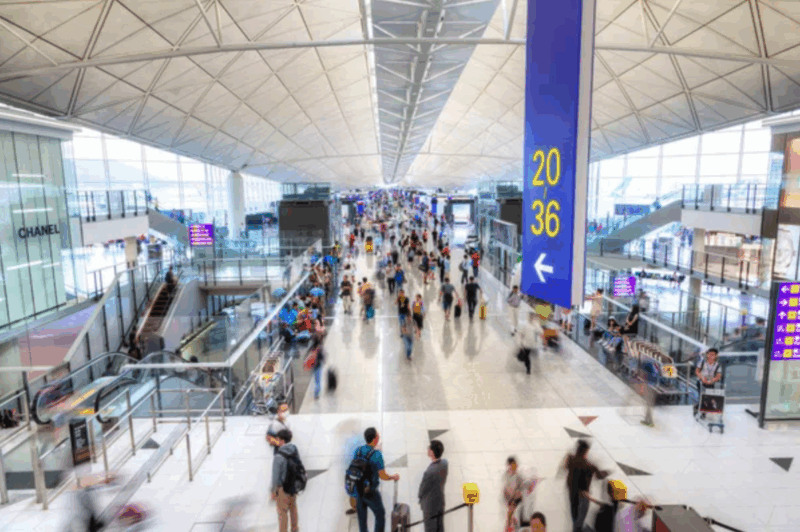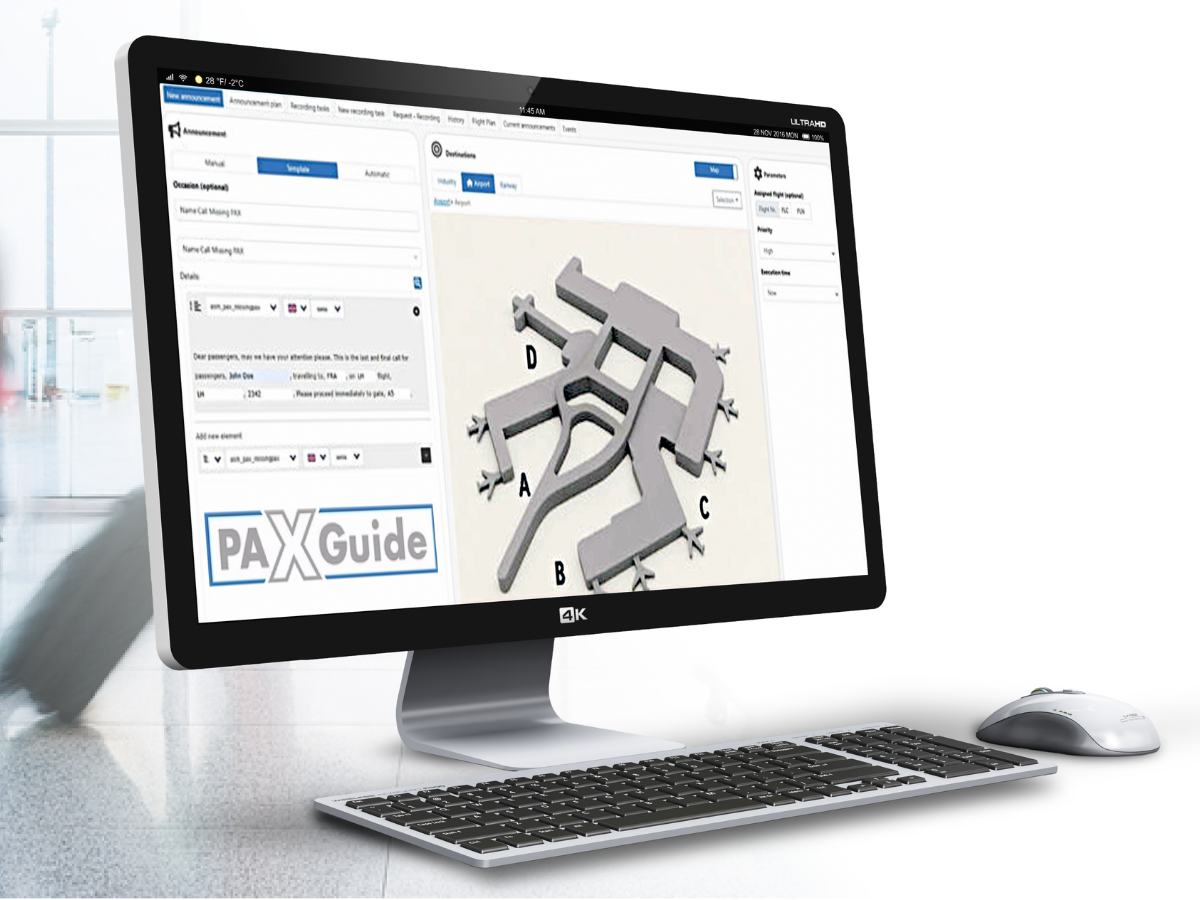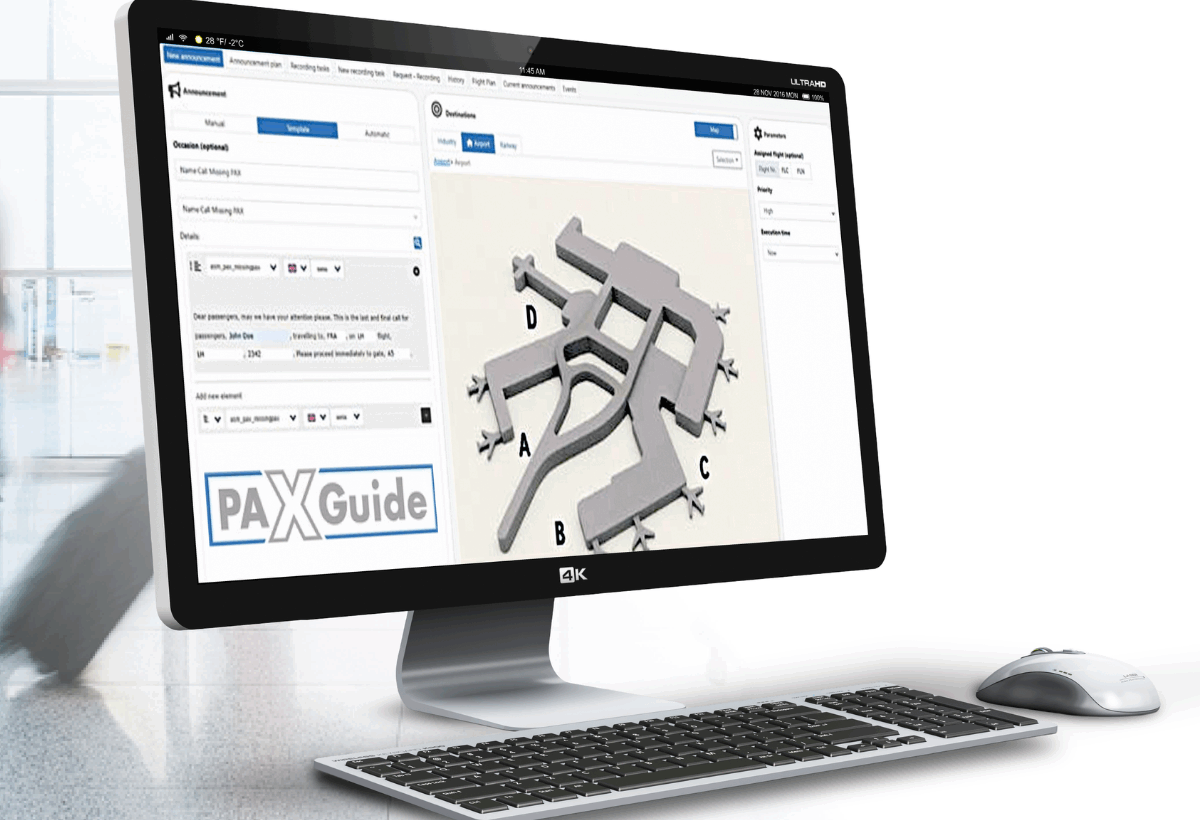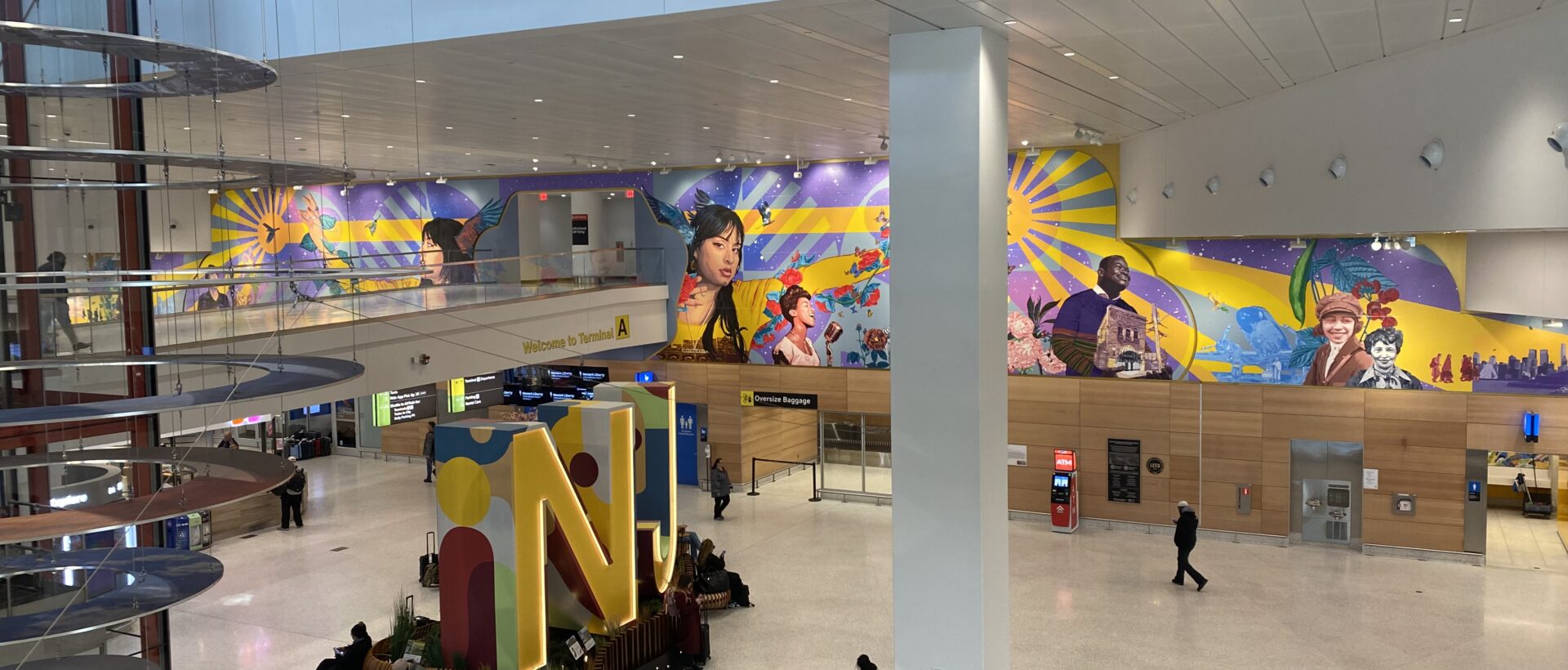Airports are synonymous with movement, noise and crowds. They’re transit points for millions of people, each with their own schedules, stress levels and sensitivities.
While the goal of any airport is to facilitate efficient travel, the traditional approach to communication – relying on frequent, loud and overlapping announcements – has often contributed to passenger fatigue, confusion and dissatisfaction. In response, a forward-thinking concept is gaining traction: the ‘quiet airport’. This innovative approach prioritises passenger well-being through smarter, more sustainable communication systems that reduce noise pollution while enhancing clarity and efficiency.

Traditional airport PA systems are built for volume, not precision, broadcasting frequent messages across wide areas, often resulting in communication overload. Unclear or overcrowded announcements can cause passengers to miss critical information. In multicultural and multilingual environments, announcements that fail to reach passengers in their preferred language further exacerbate confusion. For passengers navigating layovers, delays or long queues, this auditory overload can turn an already taxing journey into an overwhelming experience.
Quiet airports turn this paradigm on its head. Instead of more volume, the concept emphasises more intelligence, leveraging advanced audio technologies and thoughtful infrastructure design to communicate effectively without creating chaos. At the core of this transformation are several key principles: strategic speaker placement, zoned or localised announcements, multilingual support, visual communication and personalised mobile notifications. These elements work together to ensure passengers receive the right message, in the right language, at the right time and in the most appropriate format or volume.
One of the key pillars of quiet airports is the use of ambient noise sensors. These sensors continuously monitor sound levels across the terminal in real time, allowing the PA system to dynamically adjust volume levels and frequencies to suit each space. For example, a busy food court might require louder, more direct messaging, while a wellness lounge or business hub demands minimal interruption. Using directional sound technology, announcements can be precisely targeted and delivered to a specific gate area without bleeding into neighbouring spaces. The result is more relevant, less disruptive communication rather than one-size-fits-all.
Beyond volume control, ambient noise sensors also enable adaptive frequency modulation, allowing announcements to cut through background chatter in high-noise areas without amplifying overall sound levels. Additionally, ambient noise data plays a role in predictive maintenance, alerting facility managers to unusual sound patterns that could signal failing equipment or environmental anomalies.
Quiet airports also leverage smart zoning technologies. With announcement control systems that define ‘hyper zones’, messages can be delivered to highly specific areas at the right time, avoiding redundancy and eliminating the chaos of overlapping audio. Meanwhile, areas such as sensory rooms, quiet lounges and overnight waiting spaces can be designated as low- or no-volume zones, receiving only emergency messages. This protects vulnerable travellers – including those with sensory sensitivities – from being overwhelmed.
To ensure inclusivity, quiet airports go beyond audio. Visual communication via digital signage and LED message boards complements audio announcements for passengers who are hearing impaired or neurodivergent. Mobile notifications delivered through airport/airline apps or text provide a personalised layer of communication, allowing passengers to receive gate changes or boarding alerts in their own language and at their convenience. Innovations such as augmented reality (AR) overlays and biometric feedback systems that respond to stress indicators are on the horizon, pushing the boundaries of what tailored airport communication can achieve.
From an operational perspective, the benefits are significant. Reducing unnecessary announcements means less strain on hardware, lower energy consumption and extended equipment lifespans. Passenger flow improves as confusion is minimised and information reaches the right people without overwhelming others. With quieter, more thoughtfully designed spaces, airports can offer a calmer environment that enhances passenger satisfaction and brand perception.
The benefits of this quiet-by-design approach extend well beyond comfort. By reducing unnecessary energy use – think fewer high-volume broadcasts and less strain on audio equipment – airports can move toward greater environmental sustainability. Operational efficiency also improves, as targeted announcements reduce passenger bottlenecks and enhance the flow of people through terminals.
Perhaps most importantly, quiet airports are future ready. By adopting digital, sensor-driven, automated infrastructure today, they lay the groundwork for broader integration with smart city systems and next-generation aviation technology. As traveller expectations evolve and global demand for sustainable, inclusive design increases, airports that embrace this shift will lead the way in redefining what modern air travel can be.
Ultimately, quiet airports represent more than just a technological upgrade. By transforming PA systems from blunt instruments into precise, adaptive tools, airports can drastically improve both the traveller experience and operational performance. By embracing the quiet airport model, aviation hubs worldwide have the opportunity to set new benchmarks for safety, sustainability and passenger-centric design.
This article first appeared in the Airport Industry-News Magazine 2025. Download the full PDF version here.












